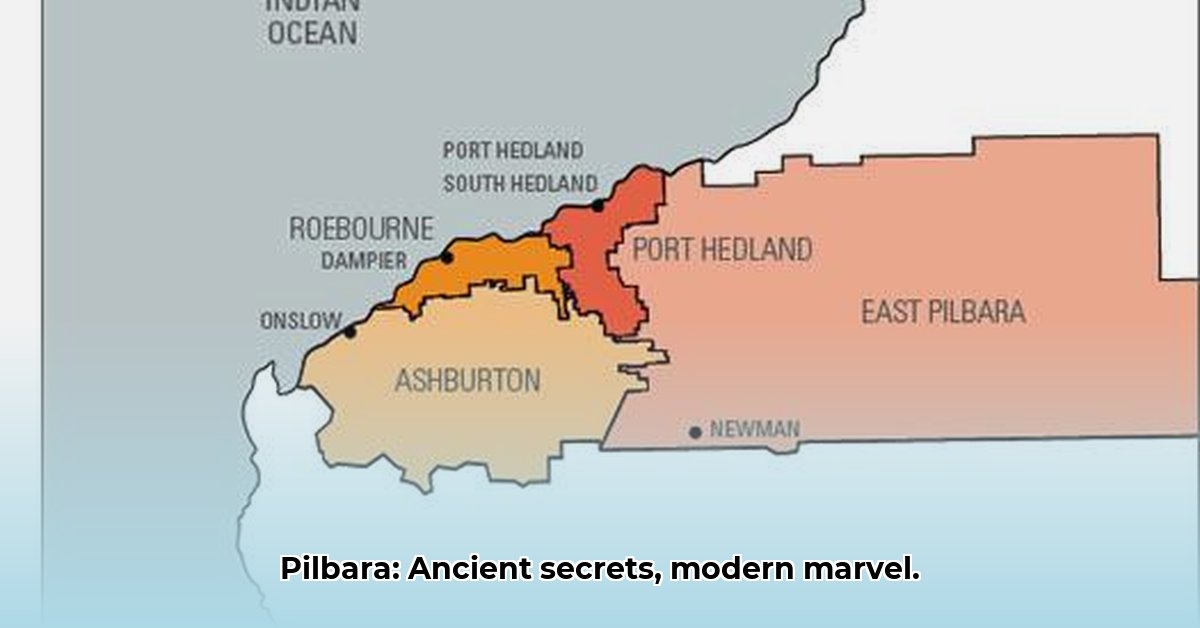
The Pilbara, a vast expanse in Western Australia, is a place where geological time whispers secrets older than humanity, Indigenous culture thrives amidst a modern mining boom, and the future hangs in the delicate balance of sustainable development. Imagine a landscape sculpted over billions of years, a place where stromatolites (living fossils among the oldest evidence of life on Earth) stand testament to an ancient past. This is the Pilbara. But its story is far more than just rocks.
A Tapestry Woven Through Time
For tens of thousands of years, Aboriginal Australians have been inextricably linked to this land, their rich culture deeply embedded in its very fabric. The Burrup Peninsula, for instance, is adorned with millions of rock carvings, a sacred library telling stories passed down through countless generations. These aren't merely artistic expressions; they are living records of a resilient culture, a heritage of profound significance. This historical depth presents a critical challenge: how can the Pilbara's immense economic potential be harnessed without compromising this invaluable cultural legacy? How can we ensure the prosperity generated benefits all stakeholders?
The Iron Ore Colossus
Today, the Pilbara is a global powerhouse, a driving force in the world's iron ore production. Massive mines, colossal trucks, and bustling port cities define the landscape, fueling a significant portion of global steel production. This economic engine brings jobs and wealth to Australia, but its impact is complex and multifaceted. What is the environmental footprint of this large-scale extraction? How can we ensure that prosperity is shared equitably, particularly among the traditional owners of the land? These are potent questions demanding careful consideration.
The sheer scale of the operations is awe-inspiring. Vast open-cut mines reshape the terrain, and the transportation of iron ore is a logistical marvel. While the economic gains are undeniable, the environmental consequences are a subject of ongoing debate. Some experts express concern about potential long-term damage to ecosystems, water resources, and air quality. Others highlight the potential of innovative mining techniques and strict environmental regulations to mitigate these risks. The reality, undoubtedly, lies somewhere in between, demanding ongoing research and careful monitoring.
Navigating the Path to Sustainability: A Three-Legged Stool
The Pilbara's future depends on achieving a delicate balance: economic progress, environmental protection, and respect for Indigenous rights and aspirations. This is a challenging three-legged stool, and instability in one area threatens the entire structure. The path forward requires collaboration, innovation, and a genuine commitment to shared prosperity.
Did you know? The Pilbara region generates billions of dollars annually for the Australian economy, highlighting its significant contribution to national prosperity. Yet, the environmental and social costs of this activity must be carefully considered.
“The Pilbara’s success depends on finding a way to harness its economic potential while upholding our commitment to environmental stewardship and Indigenous rights,” asserts Professor Anya Sharma, Director of the Centre for Sustainable Development, University of Western Australia.
Key Stakeholders and Their Aspirations:
The table below provides a snapshot of the diverse stakeholder groups and their goals.
| Stakeholder Group | Short-Term Goals (0-1 year) | Long-Term Goals (3-5 years) |
|---|---|---|
| Mining Companies | Improved environmental monitoring; enhanced operational efficiency; stricter safety protocols. | Sustainable mining practices; diversified resources; significant carbon emissions reduction; stronger community relations. |
| Australian Government | Stronger Indigenous land rights legislation; funding for cultural preservation; enhanced environmental enforcement. | Comprehensive sustainable development policies; eco-tourism investments; major investments in Indigenous education and infrastructure. |
| Indigenous Communities | Equitable benefit-sharing agreements; protection of sacred sites; greater land management control. | Economic self-sufficiency; culturally sensitive tourism; increased participation in decision-making. |
| Tourism Operators | Responsible, low-impact tourism; showcasing cultural and natural heritage; improved infrastructure. | Sustainable tourism infrastructure; innovative cultural tourism products; marketing the Pilbara as a sustainable destination. |
A Blueprint for the Future: Steps Toward Sustainable Development
The journey toward a sustainable future for the Pilbara requires a multi-pronged approach:
Prioritize Collaboration: Open dialogue and genuine partnerships among mining companies, Indigenous communities, government bodies, and other stakeholders are paramount. Integrating Indigenous knowledge and perspectives into decision-making processes is not just ethically sound, it is crucial for long-term success.
Invest in Indigenous Wellbeing: Addressing the critical needs of Indigenous communities is crucial – providing improved housing, healthcare, education, and economic opportunities within and beyond the mining sector. Meaningful land management strategies, guided by traditional knowledge, are essential.
Diversify the Economy: Reducing reliance on the mining sector is vital. Developing robust and sustainable industries – such as renewable energy, eco-tourism, and other ventures that leverage the Pilbara's unique attributes – will create a more resilient economy, less susceptible to the fluctuations of commodity markets.
Embrace Environmental Stewardship: Strict environmental regulations and sustainable mining practices are not optional; they are necessary to protect the Pilbara's precious ecosystems and safeguard its future. This includes minimizing greenhouse gas emissions, efficient water management, and the responsible rehabilitation of mined areas.
Did you know? Innovative technologies, such as autonomous haulage systems, are enhancing mining efficiency and minimizing environmental impacts within the Pilbara.
The Pilbara's future is a story still being written, a narrative that will be shaped by the choices we make today. By embracing collaboration, prioritizing Indigenous wellbeing, diversifying the economy, and committing to environmental stewardship, we can ensure that this remarkable region thrives for generations to come, fostering a harmonious balance between ancient heritage and modern progress. The path is challenging, yet the rewards—a sustainable and prosperous Pilbara—are worth the effort.